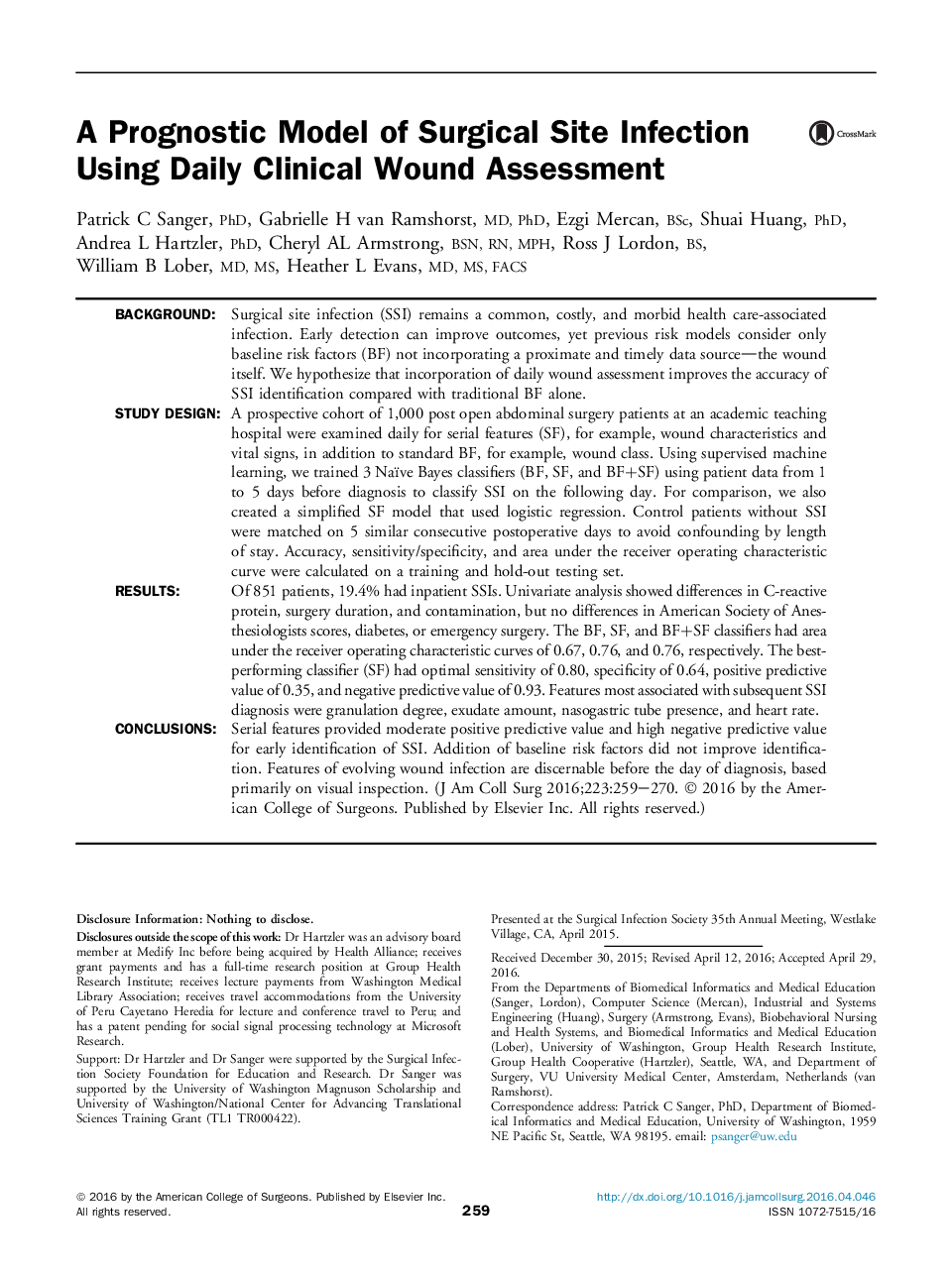| کد مقاله | کد نشریه | سال انتشار | مقاله انگلیسی | نسخه تمام متن |
|---|---|---|---|---|
| 6252414 | 1612203 | 2016 | 14 صفحه PDF | دانلود رایگان |
BackgroundSurgical site infection (SSI) remains a common, costly, and morbid health care-associated infection. Early detection can improve outcomes, yet previous risk models consider only baseline risk factors (BF) not incorporating a proximate and timely data source-the wound itself. We hypothesize that incorporation of daily wound assessment improves the accuracy of SSI identification compared with traditional BF alone.Study DesignA prospective cohort of 1,000 post open abdominal surgery patients at an academic teaching hospital were examined daily for serial features (SF), for example, wound characteristics and vital signs, in addition to standard BF, for example, wound class. Using supervised machine learning, we trained 3 Naïve Bayes classifiers (BF, SF, and BF+SF) using patient data from 1 to 5 days before diagnosis to classify SSI on the following day. For comparison, we also created a simplified SF model that used logistic regression. Control patients without SSI were matched on 5 similar consecutive postoperative days to avoid confounding by length of stay. Accuracy, sensitivity/specificity, and area under the receiver operating characteristic curve were calculated on a training and hold-out testing set.ResultsOf 851 patients, 19.4% had inpatient SSIs. Univariate analysis showed differences in C-reactive protein, surgery duration, and contamination, but no differences in American Society of Anesthesiologists scores, diabetes, or emergency surgery. The BF, SF, and BF+SF classifiers had area under the receiver operating characteristic curves of 0.67, 0.76, and 0.76, respectively. The best-performing classifier (SF) had optimal sensitivity of 0.80, specificity of 0.64, positive predictive value of 0.35, and negative predictive value of 0.93. Features most associated with subsequent SSI diagnosis were granulation degree, exudate amount, nasogastric tube presence, and heart rate.ConclusionsSerial features provided moderate positive predictive value and high negative predictive value for early identification of SSI. Addition of baseline risk factors did not improve identification. Features of evolving wound infection are discernable before the day of diagnosis, based primarily on visual inspection.
Journal: Journal of the American College of Surgeons - Volume 223, Issue 2, August 2016, Pages 259-270.e2
